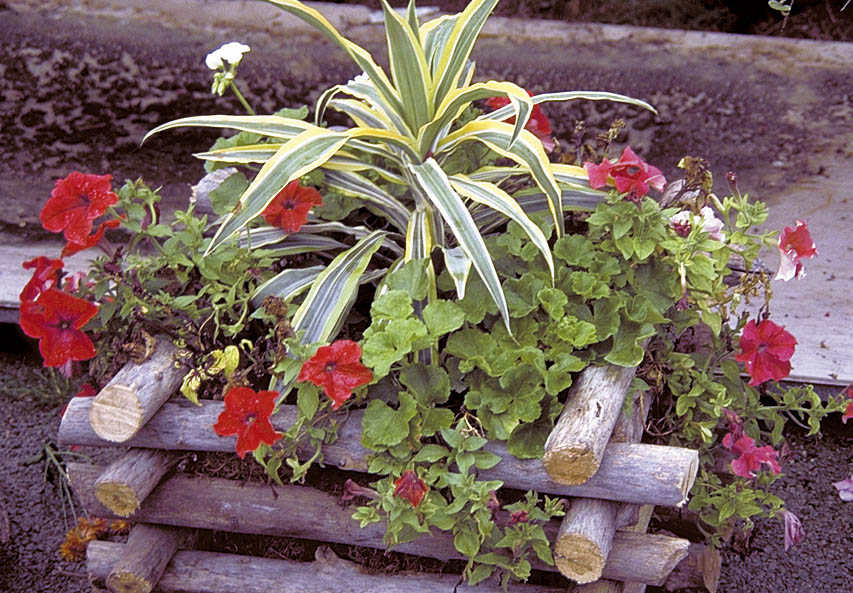
 |
Getting started:
The first step is to select an appropriate container. A drain hole is a must and after that just about anything goes. Containers come in plastic, wood, fiberglass, iron, cement, stone and more. Extra work is needed to keep smaller containers watered as plants grow, while larger containers allow you to use a more diverse selection of plants, and are easier to keep moist.
Always use a light growing medium (soilless mix). This allows water to flow easily and provides the roots with sufficient air. Most commercially available mixes are a blend of peat moss, vermiculite and perlite. We like 'fluffy' lightweight soils. Some brands incorporate fertilizer into the mix, while others add a polymer, which expands and retains moisture. Do not use garden soils that are too heavy and may contain weed seeds. If using a large container, fill the bottom third to half with a less expensive ingredient such as pine mulch. Most annuals will survive quite well in 30 cm (12-in.) of soil.
Know the light conditions of the spot where you intend to place the container. Most annuals will not do well in heavy, all-day shade, while shade loving annuals don't like sun at the peak of the day, but do very well with some morning or late afternoon sun. Also remember that very sunny locations will need more watering than shade areas.
In May, newly planted containers may require watering every two to four days, As the plants establish, increasing in size and filling the containers with heavier roots, watering needs will increase. Water thoroughly each time you water. It may be necessary to water daily, particularly in the summer and especially those containers that are 30 cm (12-in.) or smaller.
|
Plants in containers should be fertilized regularly to keep them looking their best. A balanced fertilizer such as 20-20-20 works well. Fertilizing every two weeks is a good rule of thumb, but in hot weather you may need to feed more often as water use increases. Keep in mind that over-fertilizing will cause lush growth but less blooms, Slow release fertilizers may be applied to the soil's surface. These products release small amounts of nitrogen (N), phosphorous (P) and potassium (K) with each watering, thus reducing the amount of soluble fertilizer required. Slow release products do not contain the micronutrients that plants require, however, so your fertilizing program should always include the use of solubles. Plants in containers will require the dead-heading (a garden buzz word for removing old flowers once they look ratty) of old blooms, depending on the plants used. Some are self-cleaning. Plants may also need trimming. The real fun of container gardening, besides enjoying their beauty, is selecting the plants. You need not limit yourself to annuals, although their long-lasting colour and the many new varieties now available make them a natural choice. Herbs, perennials and even vegetables, can be planted in containers. The sky is the limit, so experiment and have fun!
The Dos and Don'ts:
|



